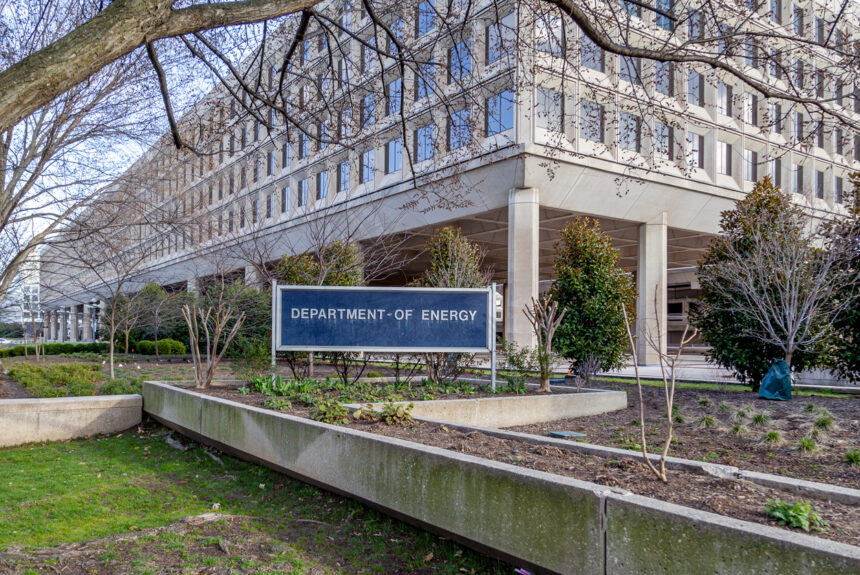The Department of Energy (DOE) can be a catalyst for energy innovation and the largest funder of research, development, and demonstrations for physical sciences and applied energy in the world. Each year, scientists, engineers, and experts working at DOE’s national laboratories make critical advancements in technological innovation which yields significant economic, energy security, and environmental benefits. Despite its successes, operational inefficiencies are holding back the full potential of the agency. A new report from ClearPath titled “ClearPath Proposal to Modernize the U.S. Department of Energy” outlines reforms to reorganize DOE to increase its effectiveness and to ensure better use of taxpayer dollars.
>>>READ: Securing America’s Nuclear Energy Fuel Supply Chain
The Department of Energy’s role in America’s energy strategy has grown significantly since its inception. Originally tasked with energy development and regulation in response to the oil crisis of the 1970s, the agency shifted its focus in the 1980s during the Cold War to nuclear weapons research, development, and production. In the early 2000s it shifted again to focus on addressing the country’s environmental and energy needs through basic and applied research and development.
With the passage of the 2020 Energy Act, the Infrastructure Investment and Jobs Act, and the CHIPS and Science Act, DOE has an even greater focus on demonstration projects. Despite the influx of new money, there was no major change to DOE’s organizational structure. The result has been preferential treatment among certain technologies and increased bureaucracy. As the ClearPath report explains:
“The current structure of the Department incentives political appointees and career officials alike to advocate for specific technologies rather than promoting an integrated, practical application of technology innovation in the energy sector. In recent years, Administrations of both parties have tweaked the Department’s structure while leaving the organization of the applied energy offices largely unchanged…A comprehensive modernization effort is essential to ensure a future Secretary and leadership team have the tools to lead strategically in a rapidly changing technology landscape and global energy race.”
With that in mind, the report offers five policy and four organizational reforms to modernize the Department of Energy.
Policy reforms include:
- Develop procedures to protect private American intellectual property;
- Streamline Department funding competitions to encourage new applicants;
- Implement “early-success, early advancement” or “rapid prototyping” initiatives to accelerate promising, high-impact technologies;
- Expedite permitting for demonstration projects, which frequently require authorizations from multiple agencies; and
- Utilize block grant transmission & distribution funds to the states to support state-based decision making.
Notably, U.S. innovation and intellectual property are increasingly vulnerable to interference from the Chinese Communist Party. As the House Select Committee on the Chinese Communist Party recently found, China routinely “exploits the openness of the U.S. research environment to steal U.S. intellectual property (IP) and transfer technology to advance its economic and security interests to the detriment of the United States.” DOE has also allocated taxpayer dollars to CCP interests, awarding $200 million to battery maker Microvast, despite the CEO’s ties to the party. While the funding was rescinded thanks to congressional oversight, it does illustrate the threat that China poses, which the report addresses.
>>>READ: Three Federal Innovation Programs That Lawmakers Should Prioritize
ClearPath’s recommendations also provide much-needed reforms to the permitting process for RD&D programs. The Department of Energy currently offers categorical exclusions, which are categories of projects that are deemed to have a minimal environmental impact and do not require a lengthy environmental review, to R&D only, despite the agency’s congressional mandate to focus on demonstration projects as well. Extending categorical exclusions to encompass demonstration projects will bring clean energy projects online faster, which can include everything from small modular nuclear reactors to advanced geothermal. The result will be reduced costs for developers, greater energy supply, and stronger American competitiveness.
ClearPath’s organizational reforms include:
- Replace the Under Secretary for Infrastructure with an Under Secretary for Energy & Innovation to oversee the Office of Clean Energy Demonstrations (OCED), the Loan Programs Office (LPO) and the applied energy programs;
- Create an Assistant Secretary for Power & Electricity to align power sector applied energy offices (fossil, renewables and grid applications);
- Create an Assistant Secretary for Transportation, Industrial, Manufacturing and Efficiency (TIME) to align hard-to-decarbonize sectors; and
- Reduce the number of offices and initiatives that report directly to the Secretary of Energy.
A bit more technical, these four recommendations would help streamline efficiency within DOE. Under the current structure, leadership positions and offices are based on fuel type (i.e. fossil energy, renewables, nuclear power). Because of this, “political appointees and career officials are incentivized to advocate for their ‘house fuel,’ rather than looking at the energy system as a whole from a technology-inclusive standpoint,” according to the report.
ClearPath’s recommendations would modernize and simplify the agency’s structure by, among other things, putting power-producing offices under one assistant secretary and transportation and industrial offices under another. This new structure would encourage a more technology-neutral strategy by merging fossil and renewable offices under the same leadership umbrella. Greater efficiency will stretch taxpayer dollars further and discourage political favoritism.
ClearPath’s report offers much-needed reforms to the missions and operation of DOE. The Department of Energy is critical to advancing energy innovation, strengthening American competitiveness, and accelerating climate progress. These reforms will bring greater oversight, transparency and, effectiveness to the agency’s operations.
The views and opinions expressed are those of the author’s and do not necessarily reflect the official policy or position of C3.
